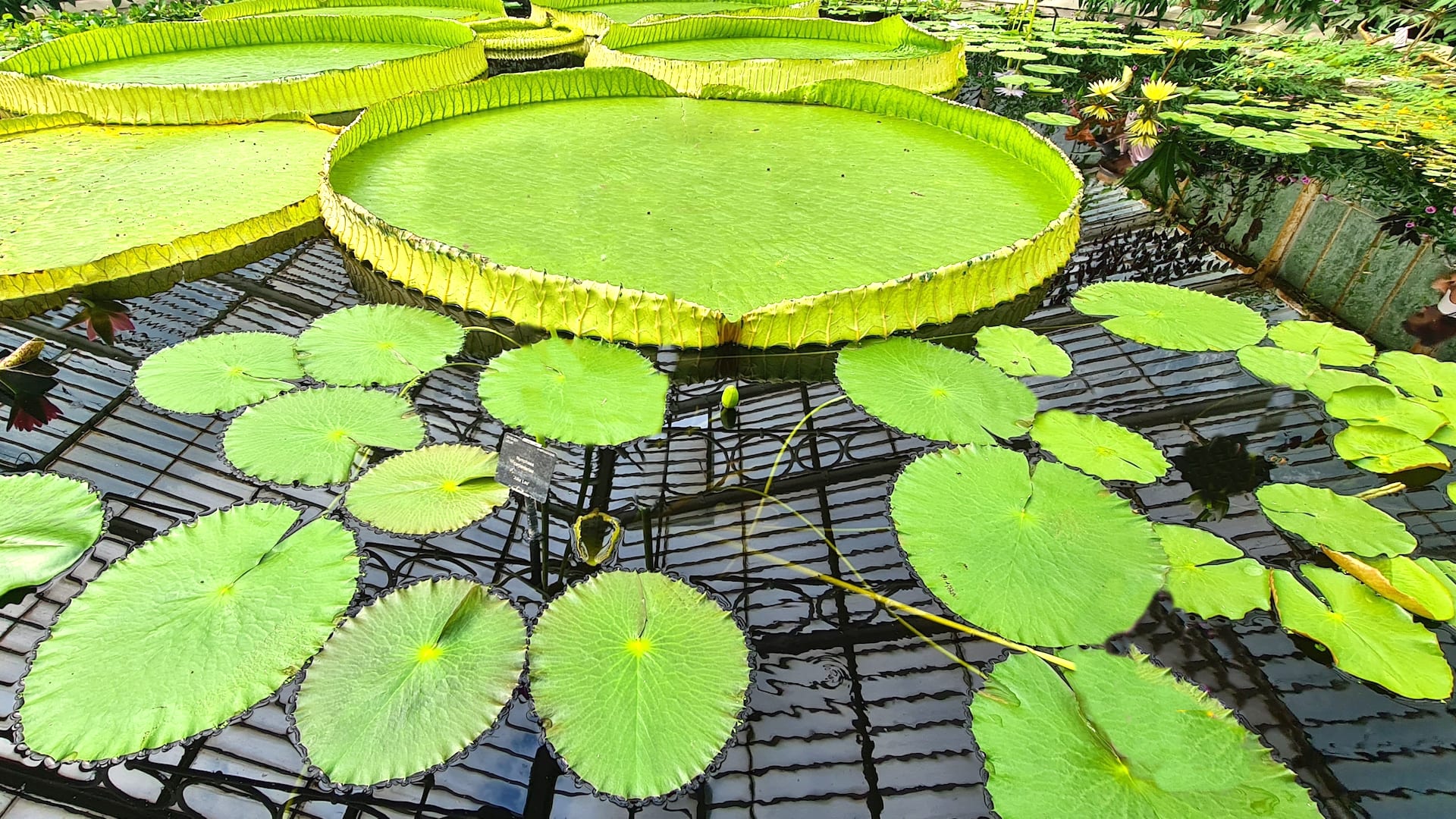Scroll for prep
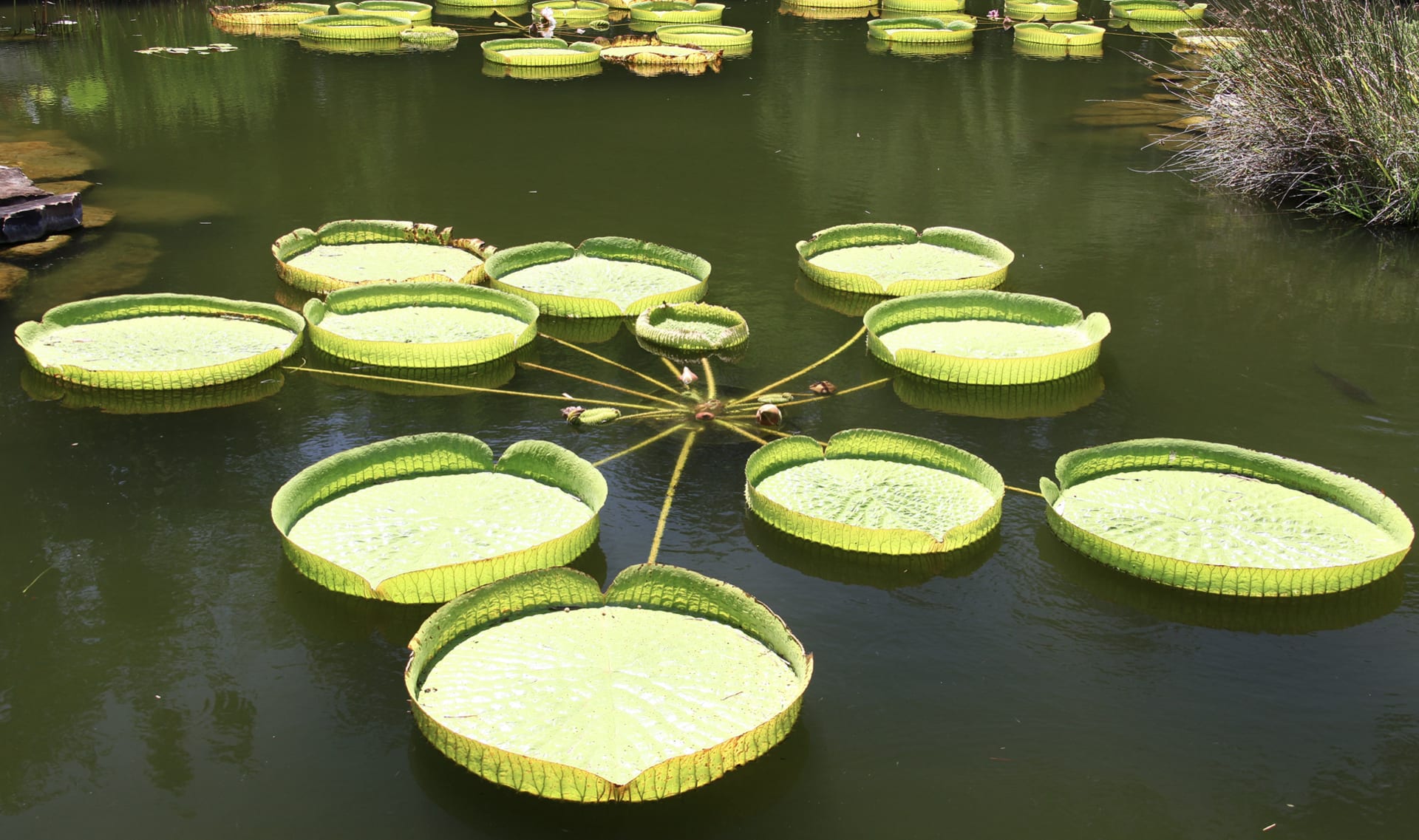
We started this unit by looking at giant water lilies. Then, we learned a lot about
plants. Let’s review some of the things that we learned.

You looked at trees and umbrellas. The leaves of a tree and the fabric of an
umbrella can’t stay up on their own. Discuss. What do you see that holds up the
leaves on the tree? And what do you see that holds up the fabric on an umbrella?

Even when a person sits on a giant water lily leaf, the leaf is strong enough to hold
its shape. Discuss. What do you see that holds up the giant water lily leaves and
makes them so strong?
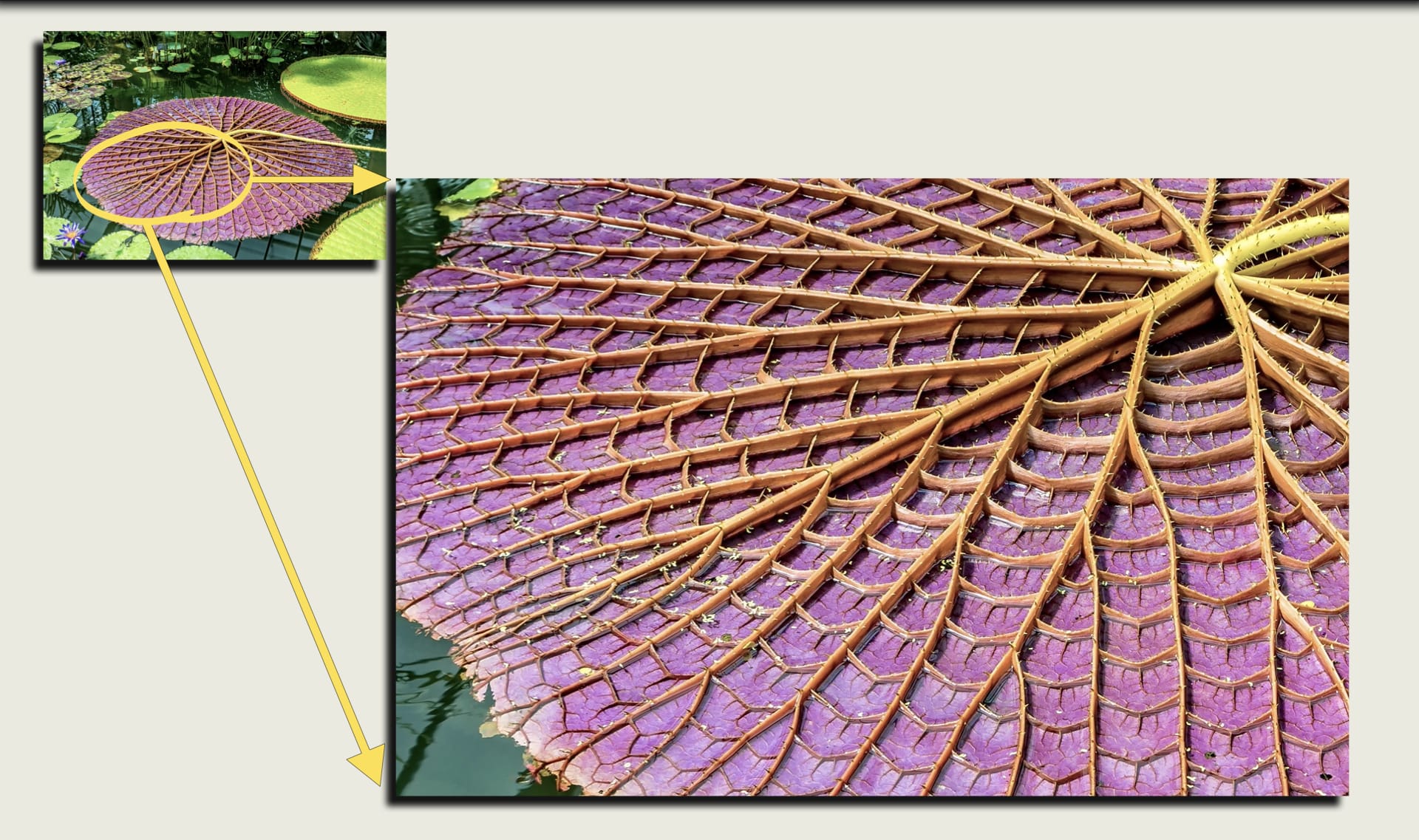
The leaves are held up by two things: the water and the veins. The veins are thick
and strong and help hold the leaf in its shape. The veins are like the ribs of the
umbrella. Without the veins and the water holding up the leaves, the leaves would
just flop down.
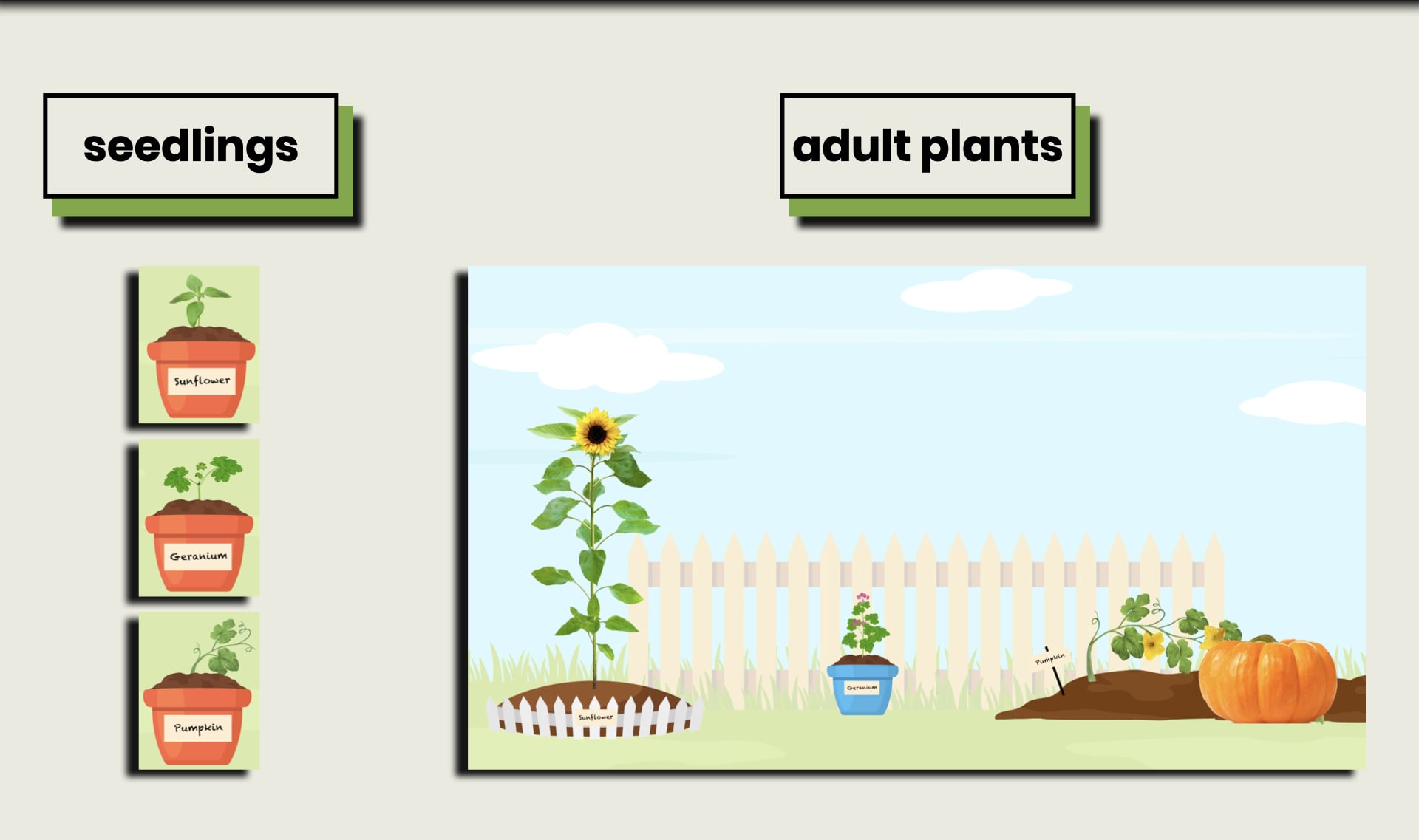
You figured out that seedlings are similar to, but not exactly the same as, their
adult plants. Discuss. What did you notice was similar between the seedlings and
adult plants? What was different?
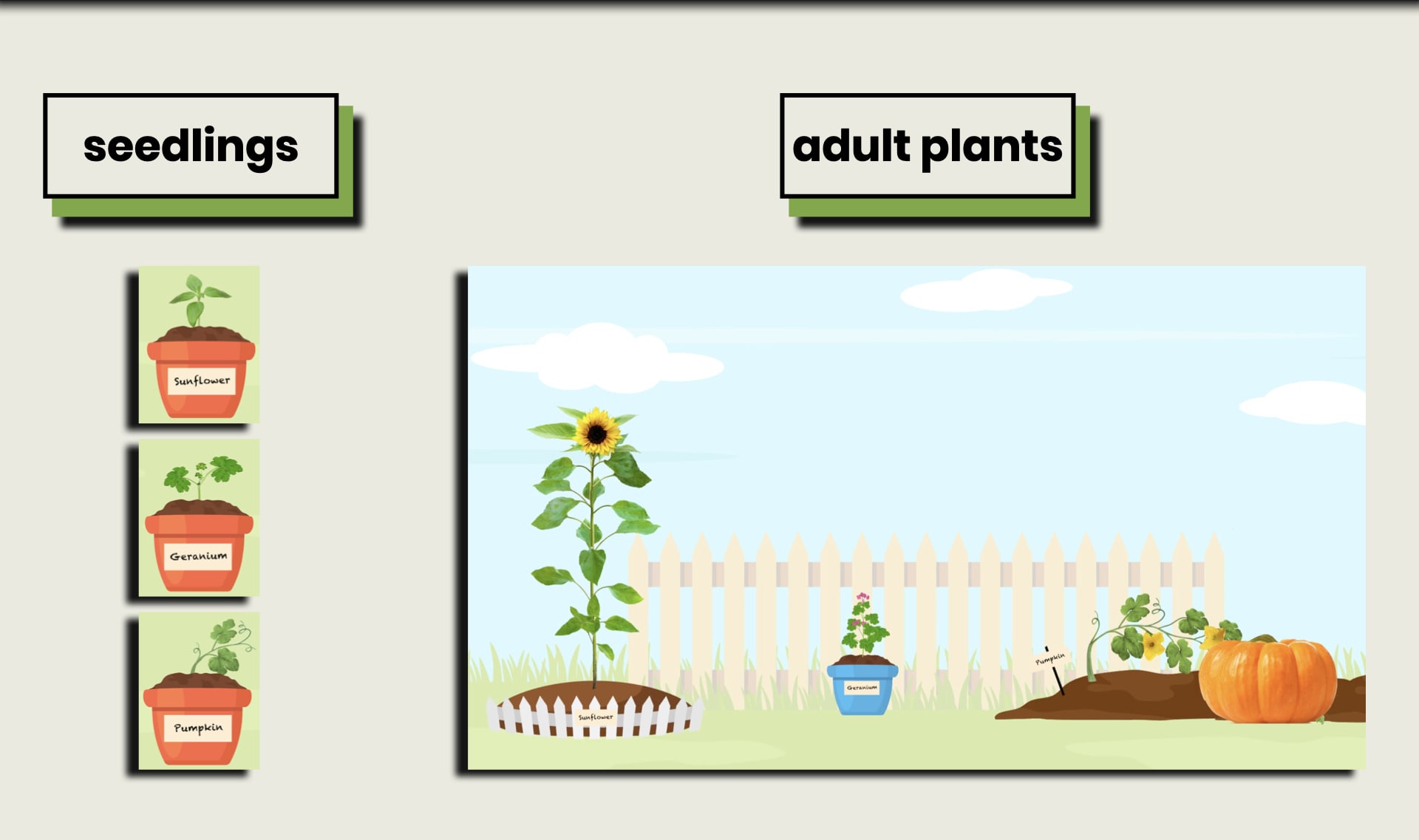
These seedlings have leaves and stems that are similar to their adult plants. The
seedlings are much smaller, but as they grow, they’ll look more and more like the
adult plants that they came from.
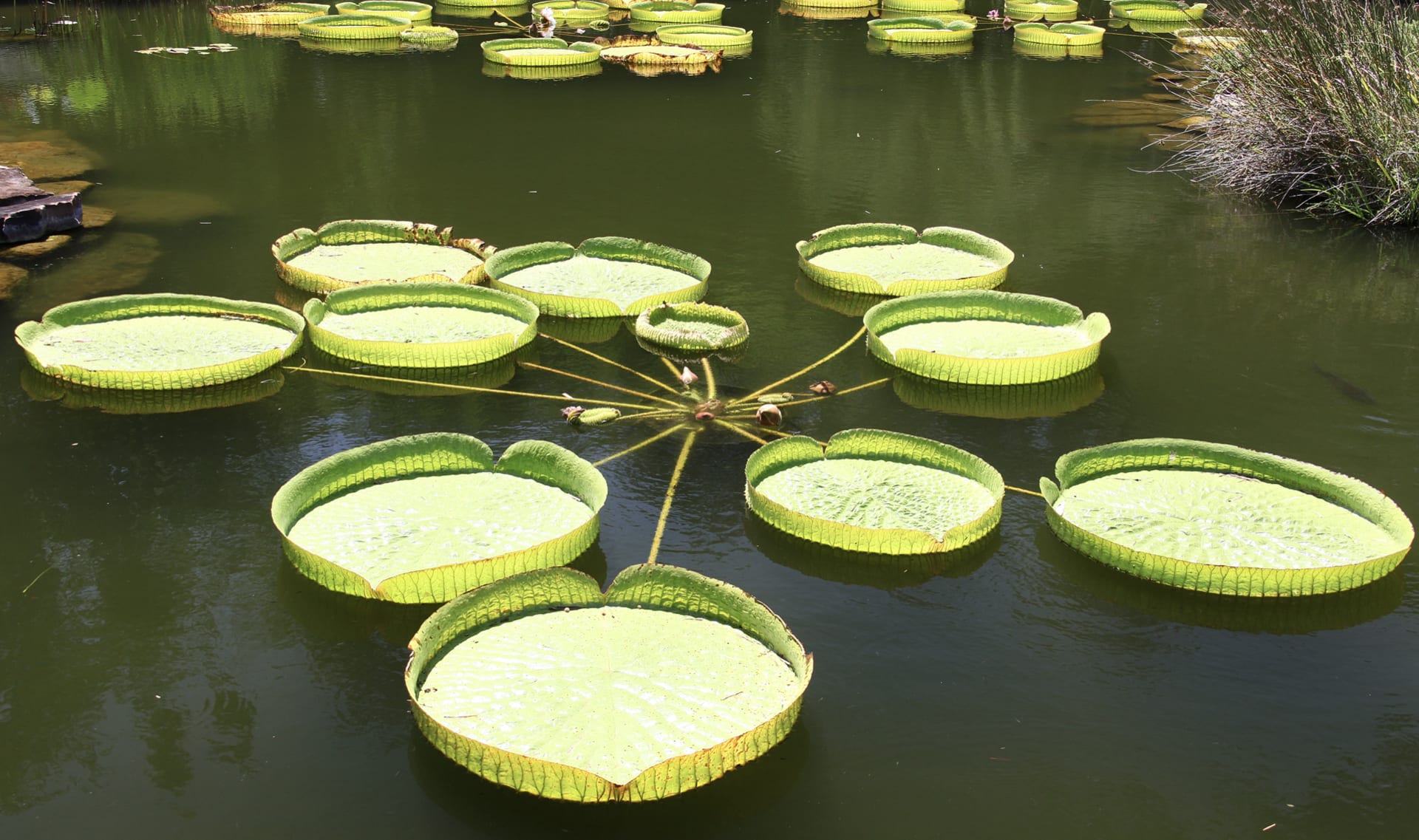
The same thing is true with giant water lilies. When giant water lily plants grow,
they look similar to the adult plants that they came from. Let’s look at some more
examples of giant water lily plants.
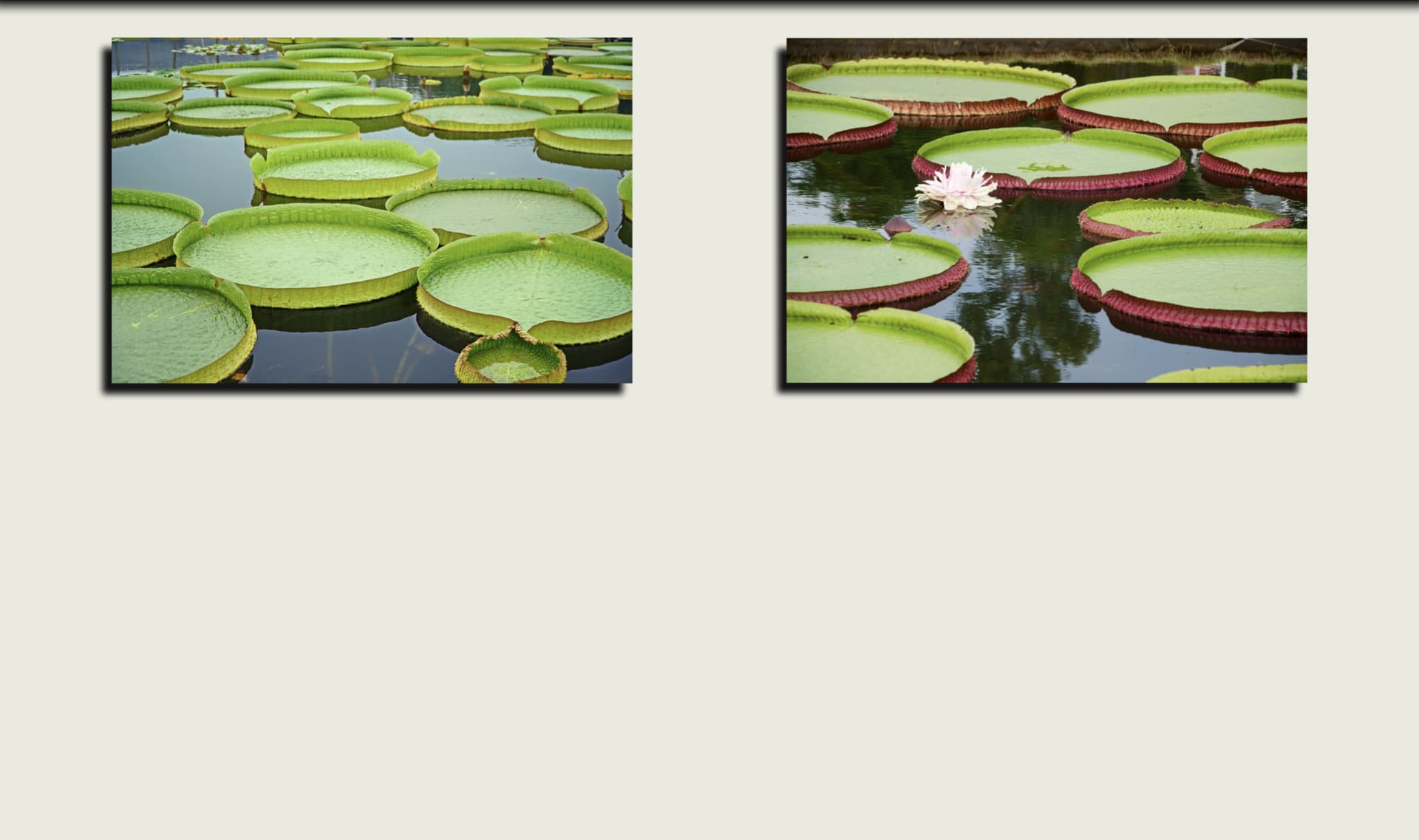
Here are two different kinds of giant water lily. Remember: each one of those
giant floating things is a single leaf! Look at the leaves, then discuss. What is the
same about the leaves from each of these plants? What is different?
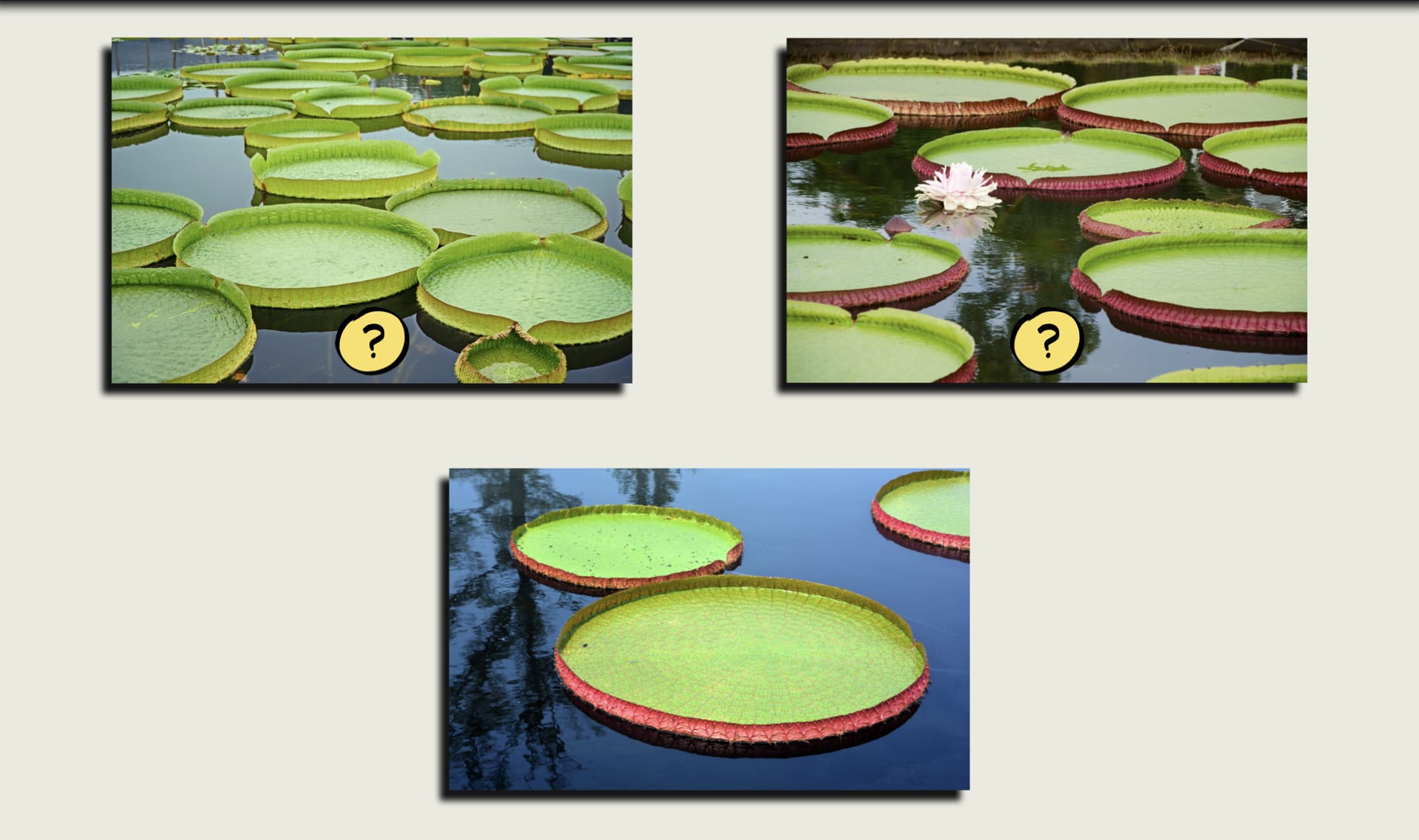
This is a new giant water lily plant. This new plant came from one of the first two
kinds of plants that you saw. Discuss. Which of the first two plants did the new
plant come from? Why do you think that?
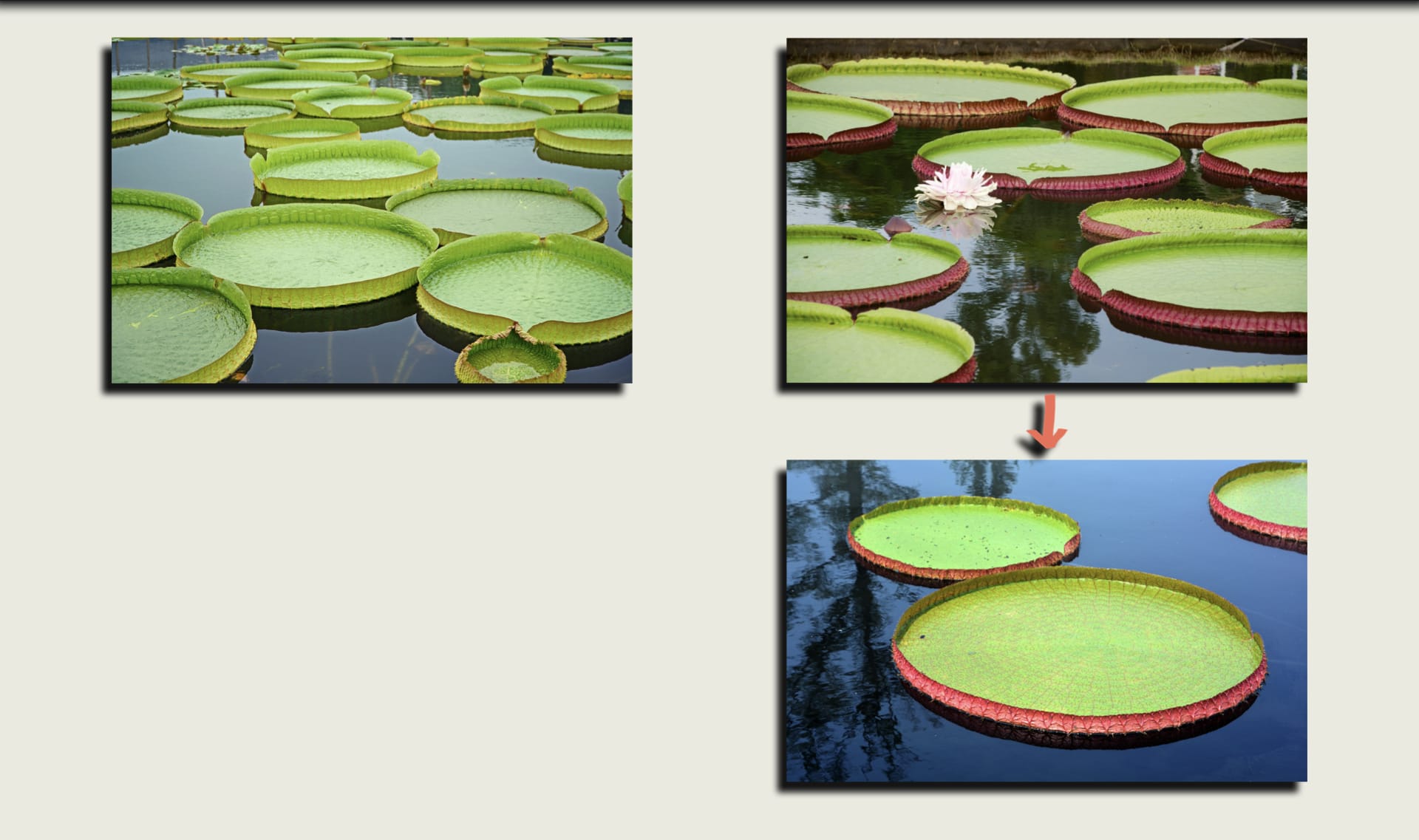
The new giant water lily plant came from the plant that looks like it. The new lily
plant has leaves that are similar to the parent plant, but they aren’t exactly the
same.
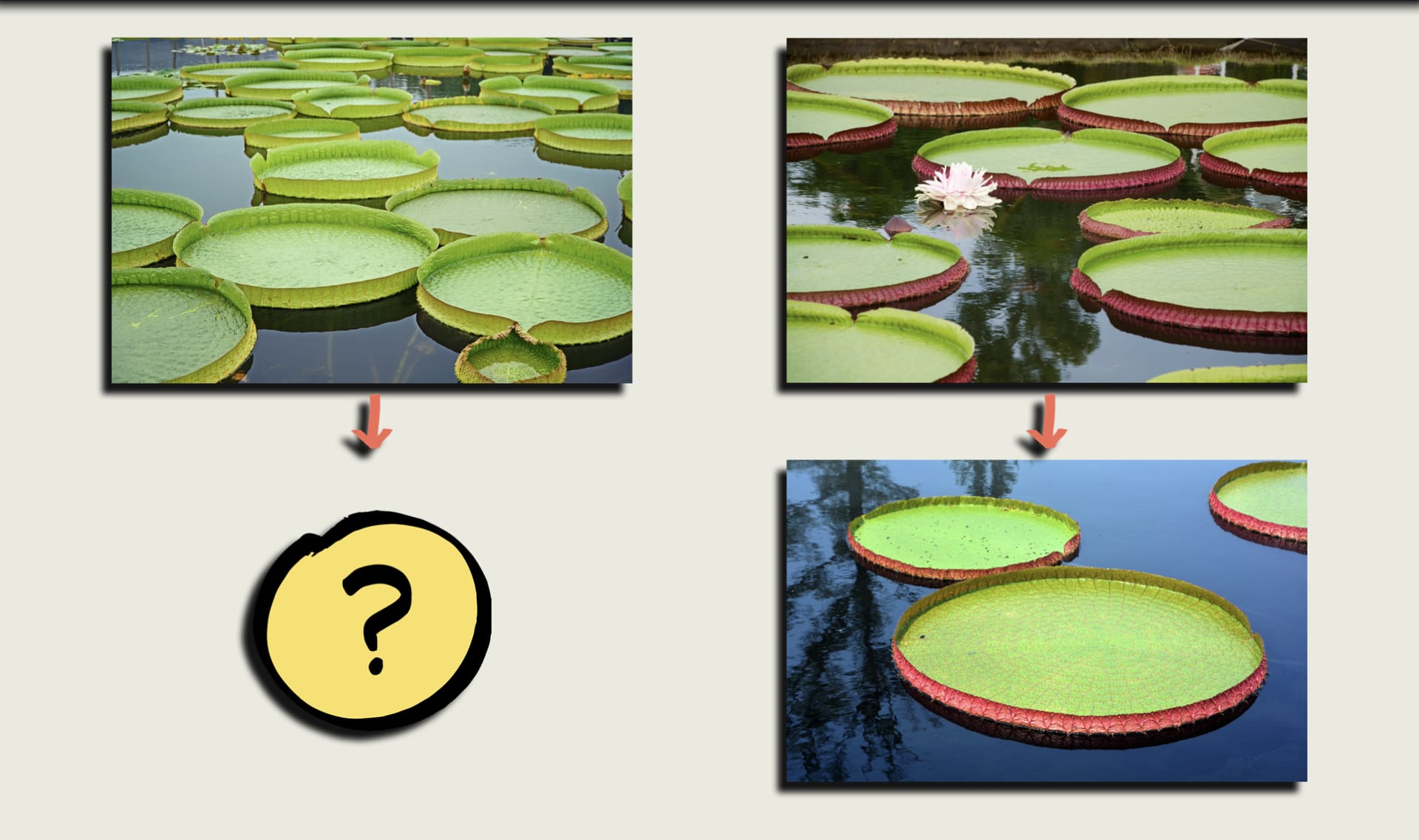
Now let’s make a prediction. Discuss. When the plant on the left makes new plants,
what will the leaves on those new plants look like? Why do you think that?
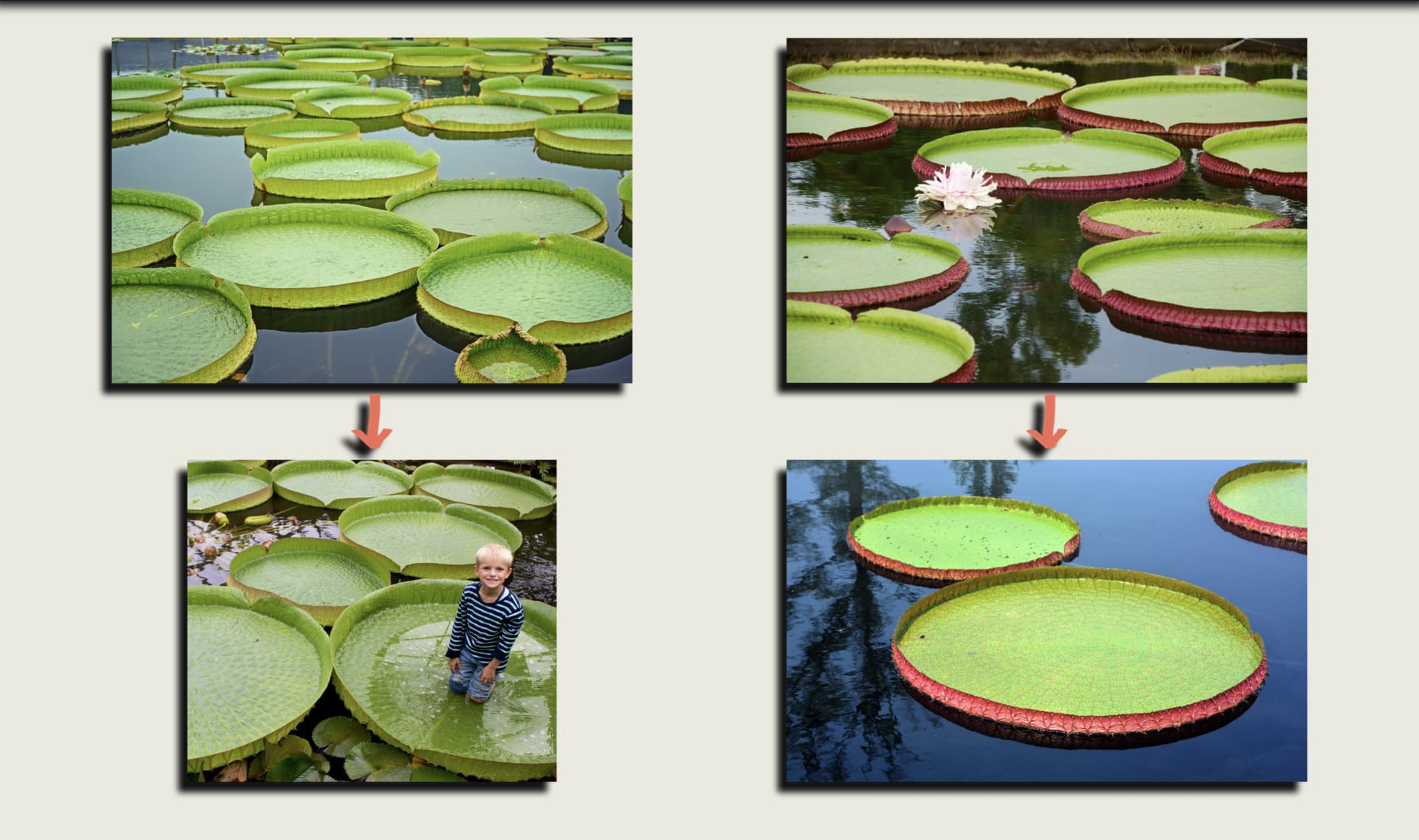
The new plant will have leaves that look like this. The new plant is similar to the
parent plant, but not exactly the same. We could predict what this plant would look
like because new plants look like the plants they came from.

We have been looking at some of the largest water lily leaves in the world. But
there is another kind of water lily. It is a very special water lily. It makes the tiniest
water lily leaves in the world.

Please wait…
This video is having trouble loading. You may have lost your Internet connection.
Step 1: Click to Reload this page
Step 2: Click to
Try our other video player
Step 3: contact support if trouble persists.
Or,
dismiss this message.
This person is in the water. She is holding a very special kind of plant in her hand.
The plant in her hand is a tiny water lily plant. This kind of plant grows the tiniest
water lily leaves in the world! Click play to get a closer look.
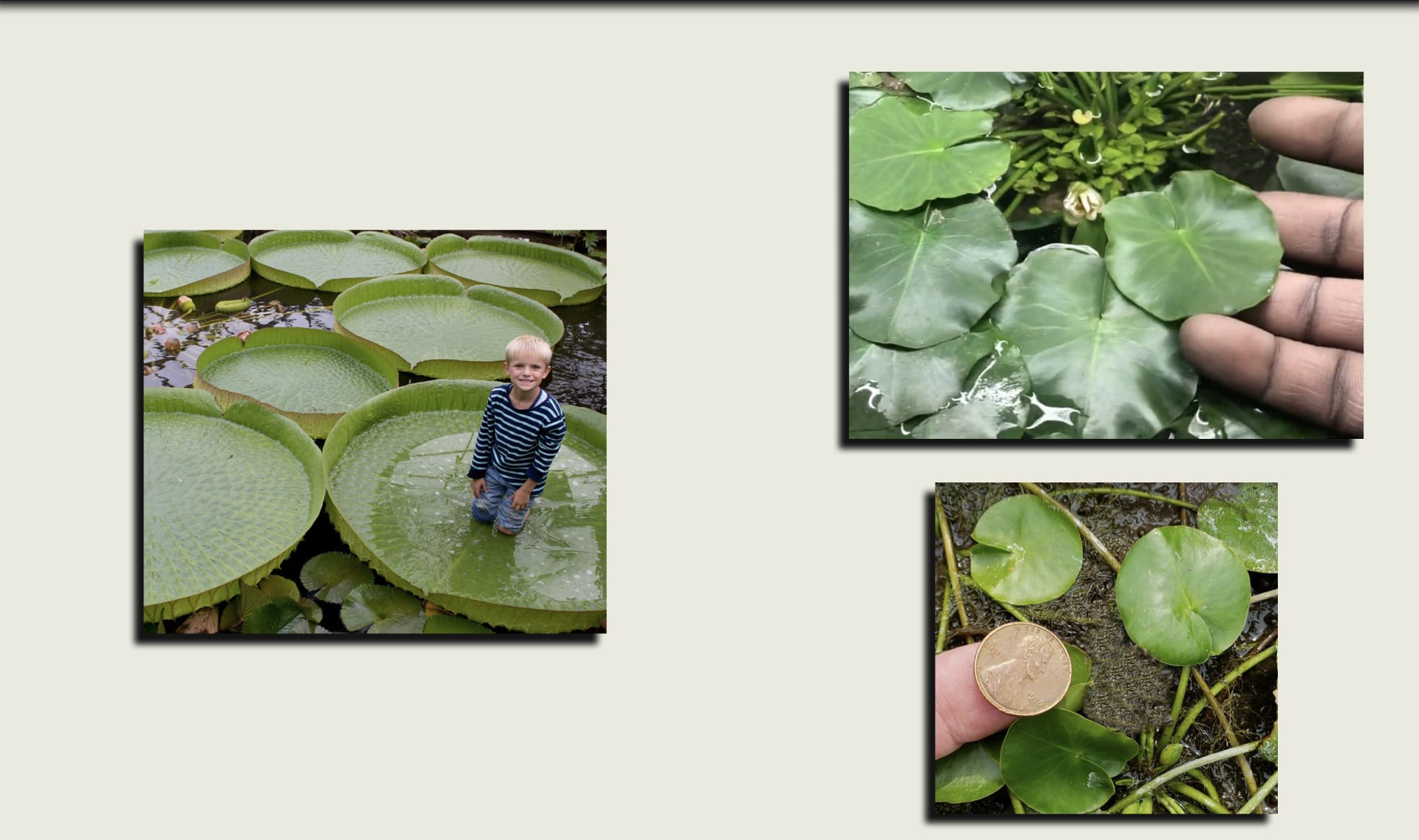
These are all water lily leaves. Discuss. What is the same about all of these water
lily leaves? What is different?
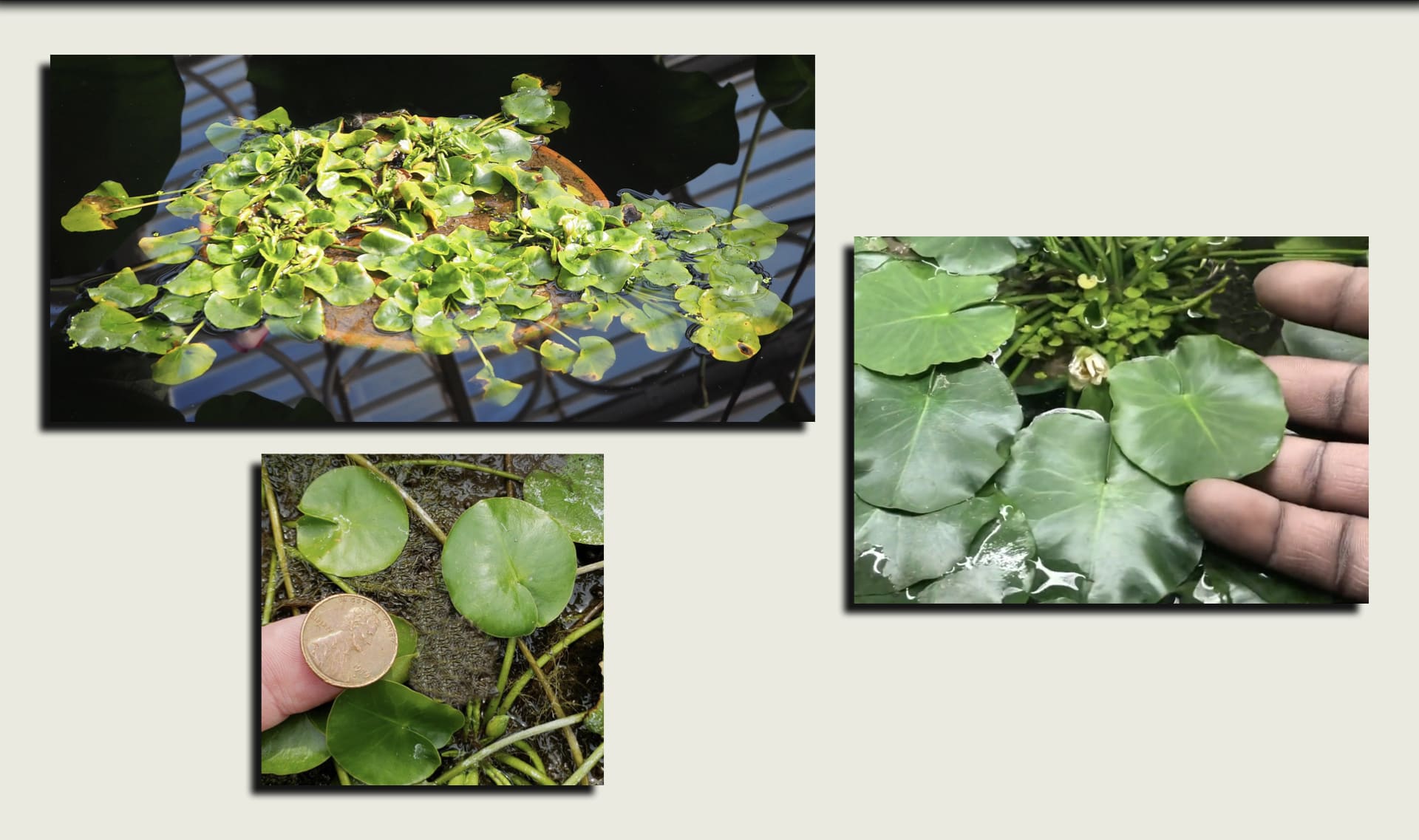
These are very special because they are the tiniest water lily leaves in the world.
But there is another reason they are special. They are also the most rare water
lilies. They don’t grow anywhere in the wild anymore.

These tiny water lilies only grow in a few gardens around the world. Gardeners, like
this one, have to work very hard to get them to grow. Each time a new tiny water
lily plant grows, it is very special because there are so few of these plants.
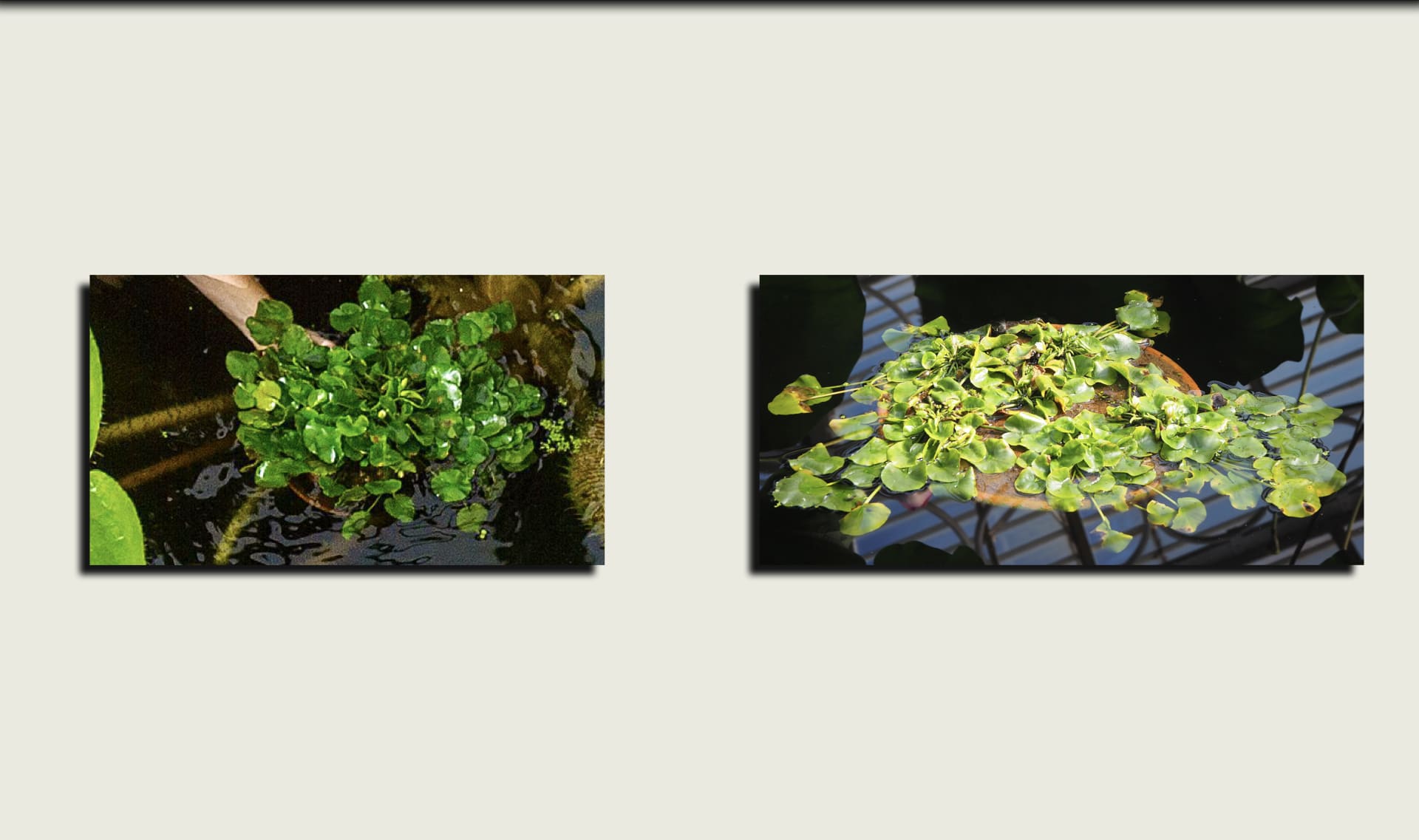
And each time a new tiny water lily plant grows, it looks similar to, but not exactly
like, the parent plant it came from. That means we can predict what new plants will
look like.
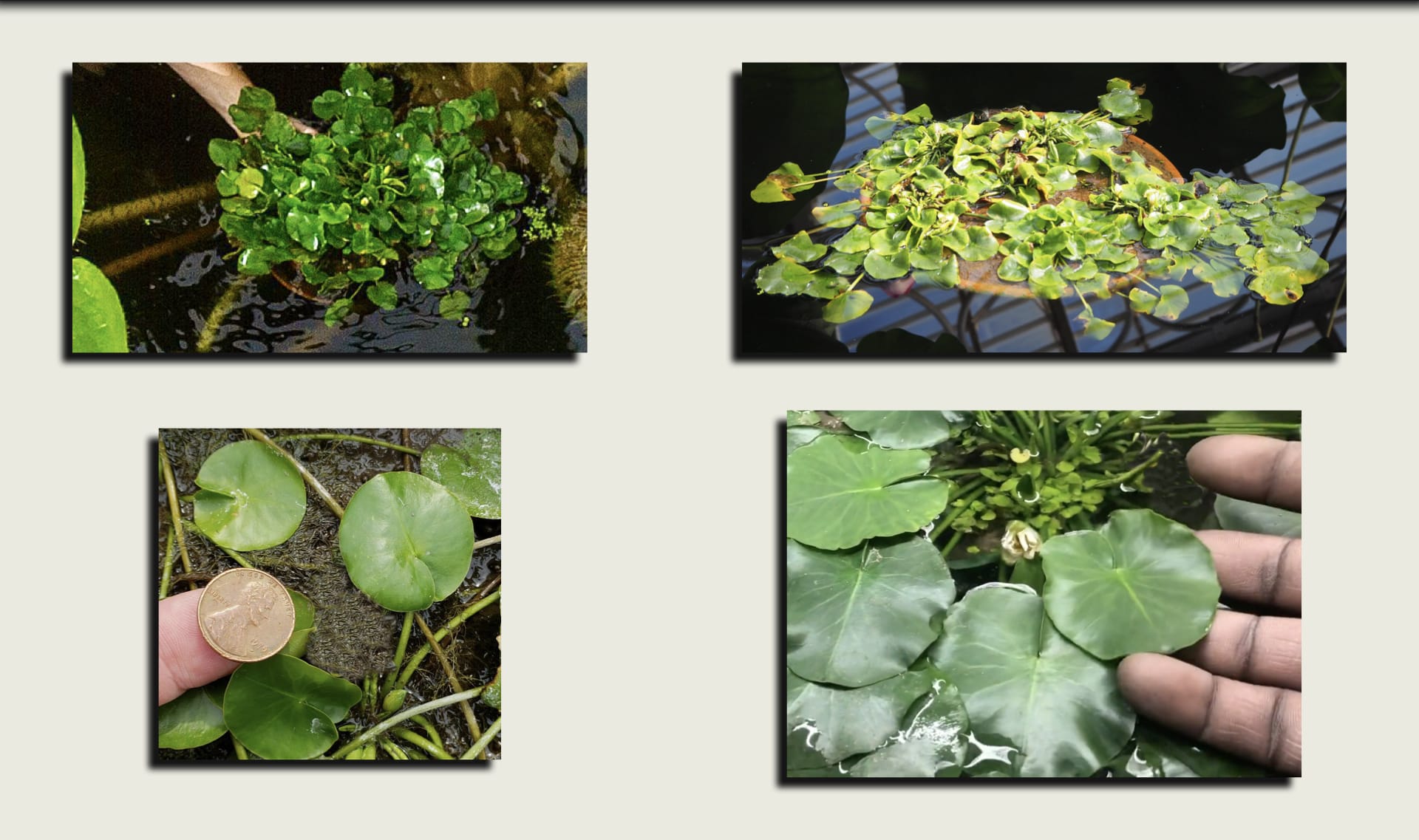
Today, you’re going to predict what a new tiny water lily plant might look like if it
came from one of these plants. You will do this by drawing your own leaf! Make
sure that your new tiny water lily looks similar to other tiny water lilies, but not
exactly the same.

Step
01/08
01/08
This is the Tiny Water Lily worksheet. You will draw one leaf for your
new tiny water lily on this worksheet.
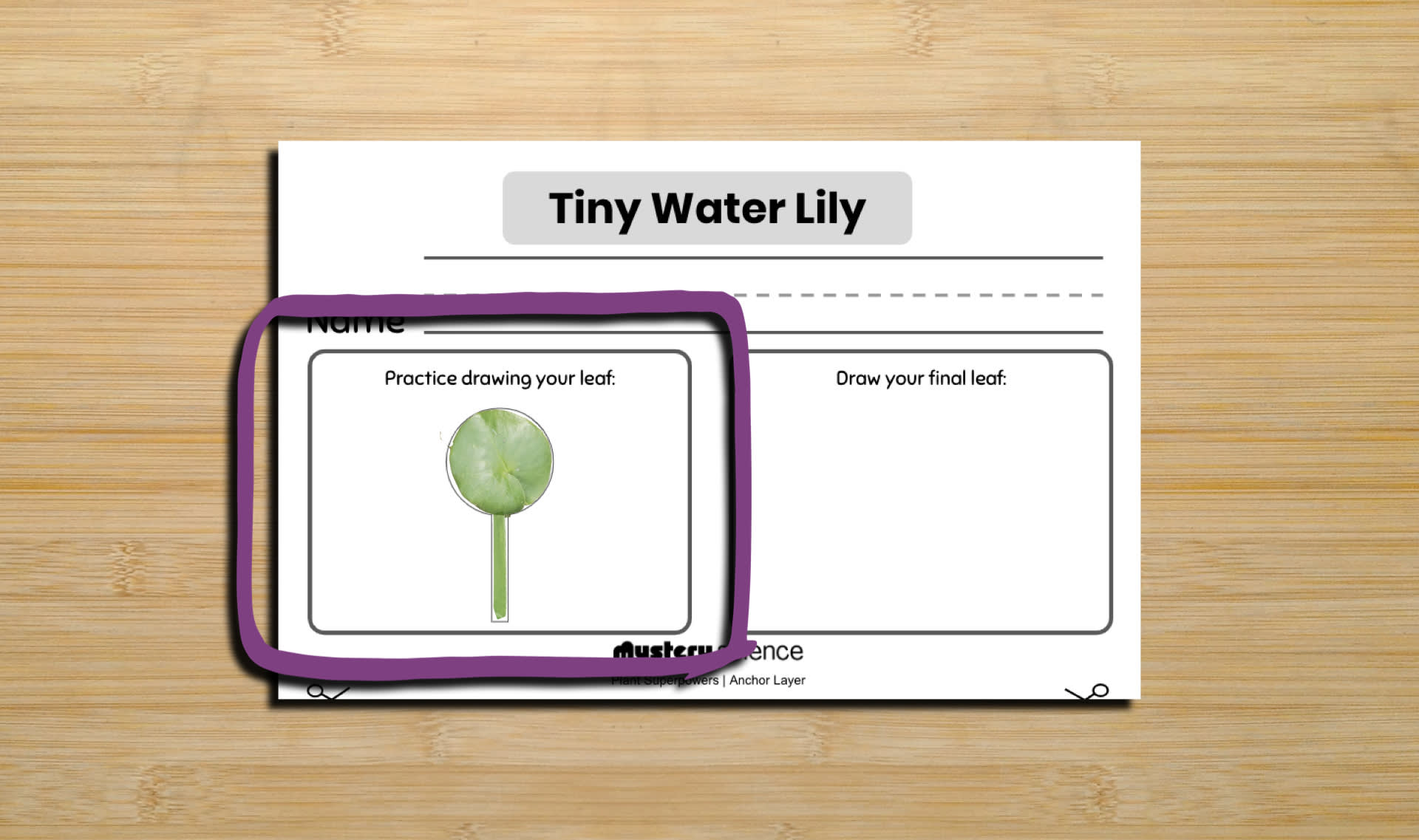
Step
02/08
02/08
In the box on the left, you will practice drawing your leaf. There is an
outline that shows about how big a tiny water lily leaf is in real life.
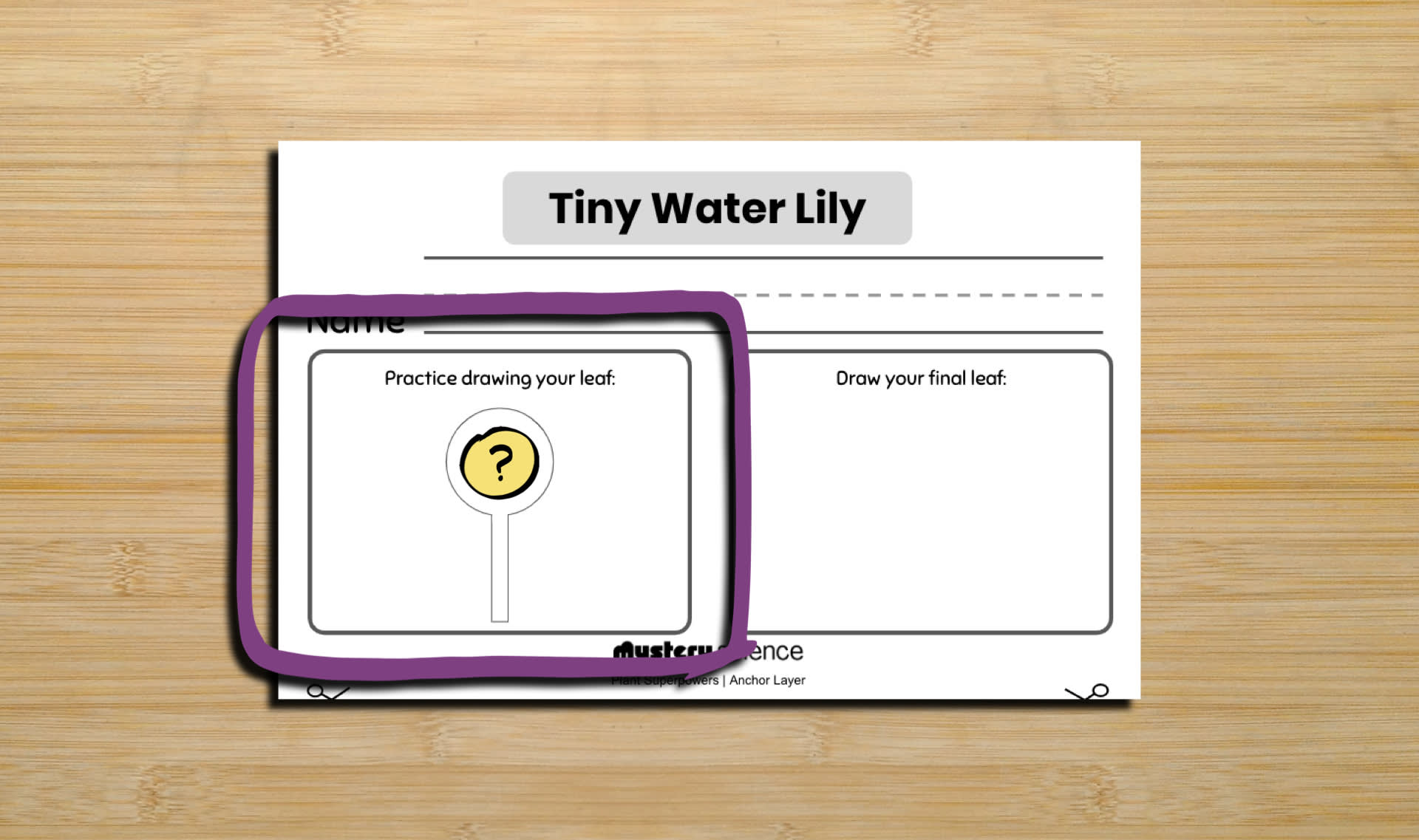
Step
03/08
03/08
Discuss. Does your water lily leaf have to be exactly the size and
shape of this outline? Or does it just need to be similar? Why do you
think that?
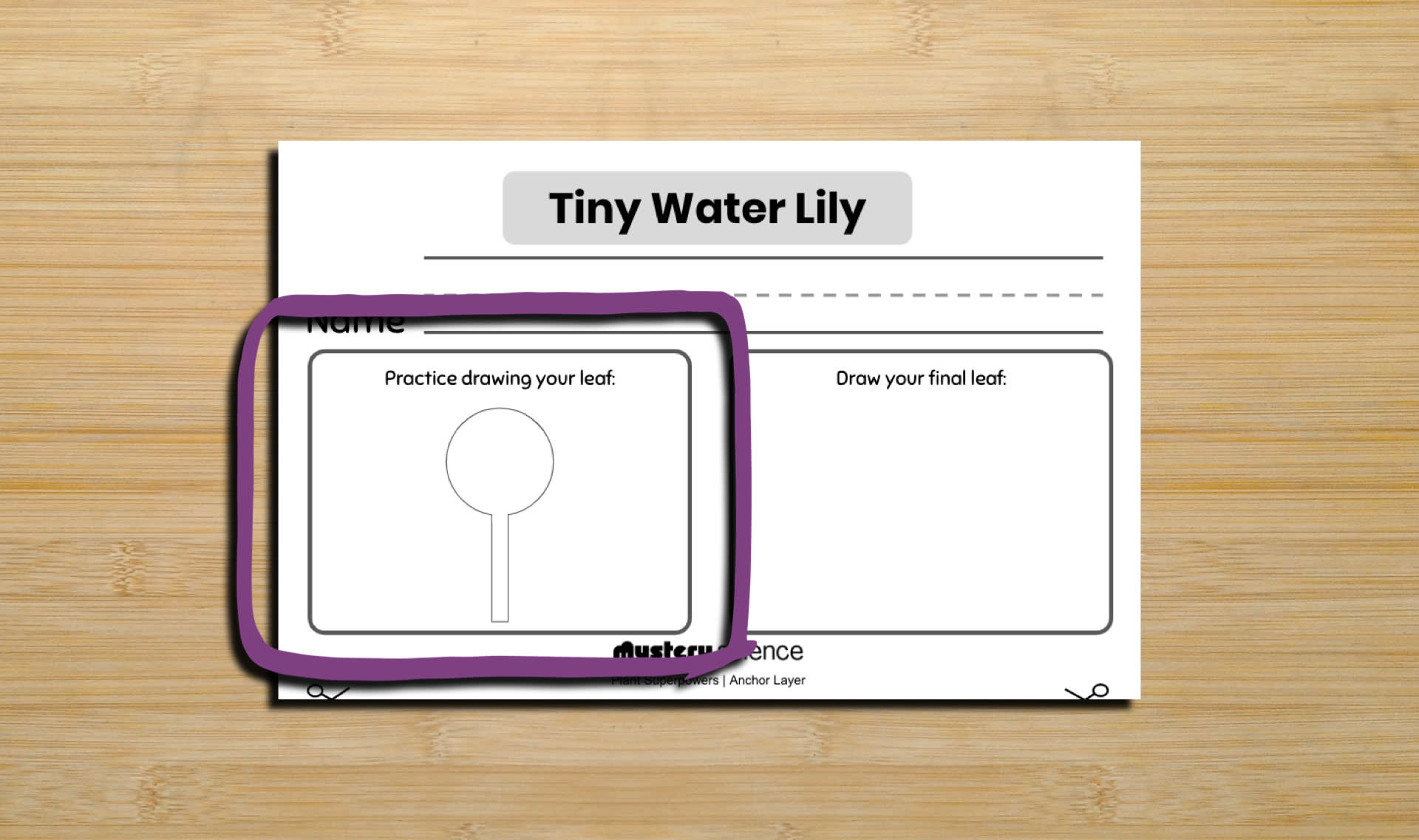
Step
04/08
04/08
When you draw your own tiny water lily leaf, it can be a slightly
different size, shape, and color. But remember: just like real plants,
your new lily leaf should be similar to the real tiny water lily leaves you
saw.
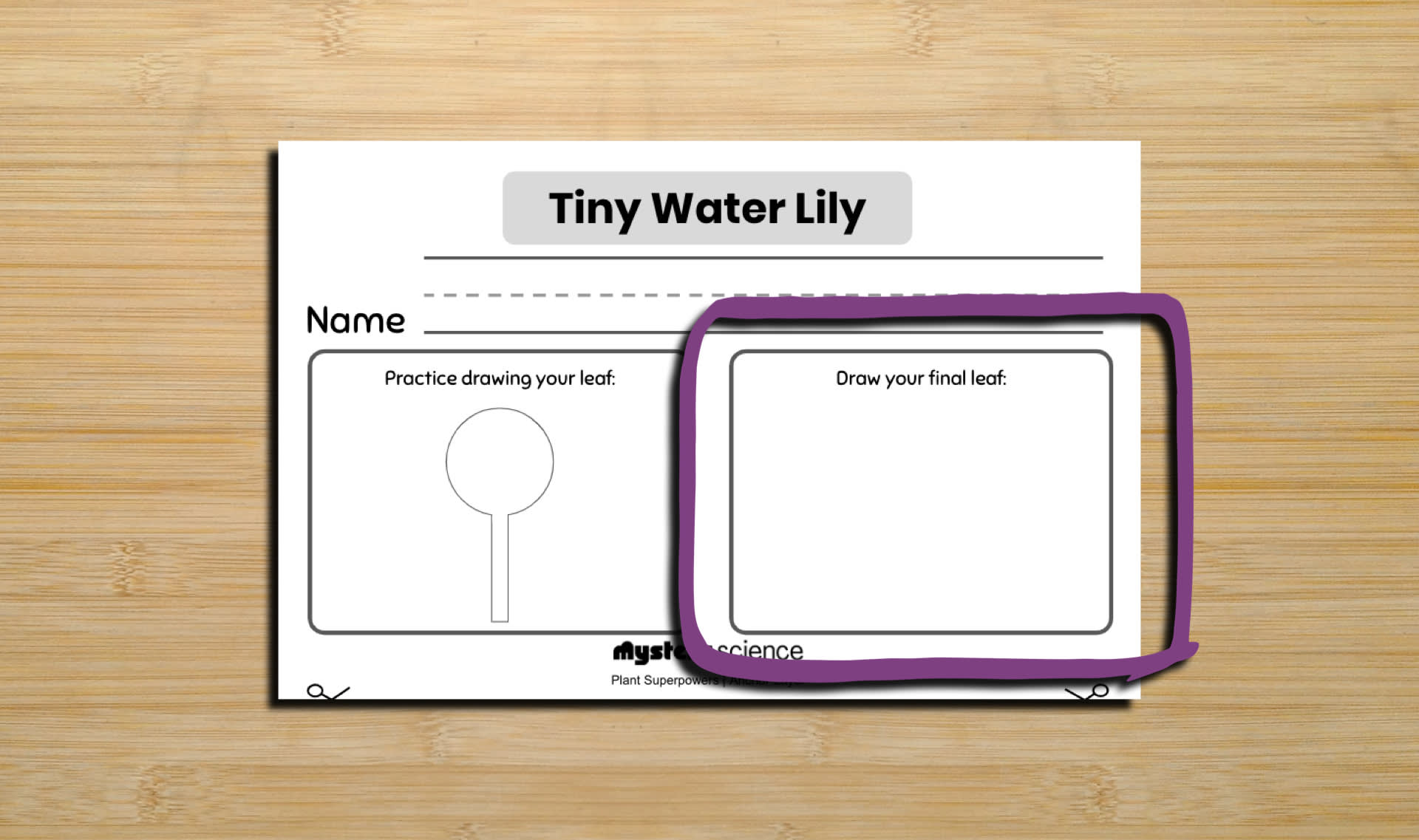
Step
05/08
05/08
Once you have practiced drawing your leaf on the left, you will draw
it in the box on the right. There is no outline, so you’ll do this on your
own. Make this final leaf match your practice leaf as closely as
possible.
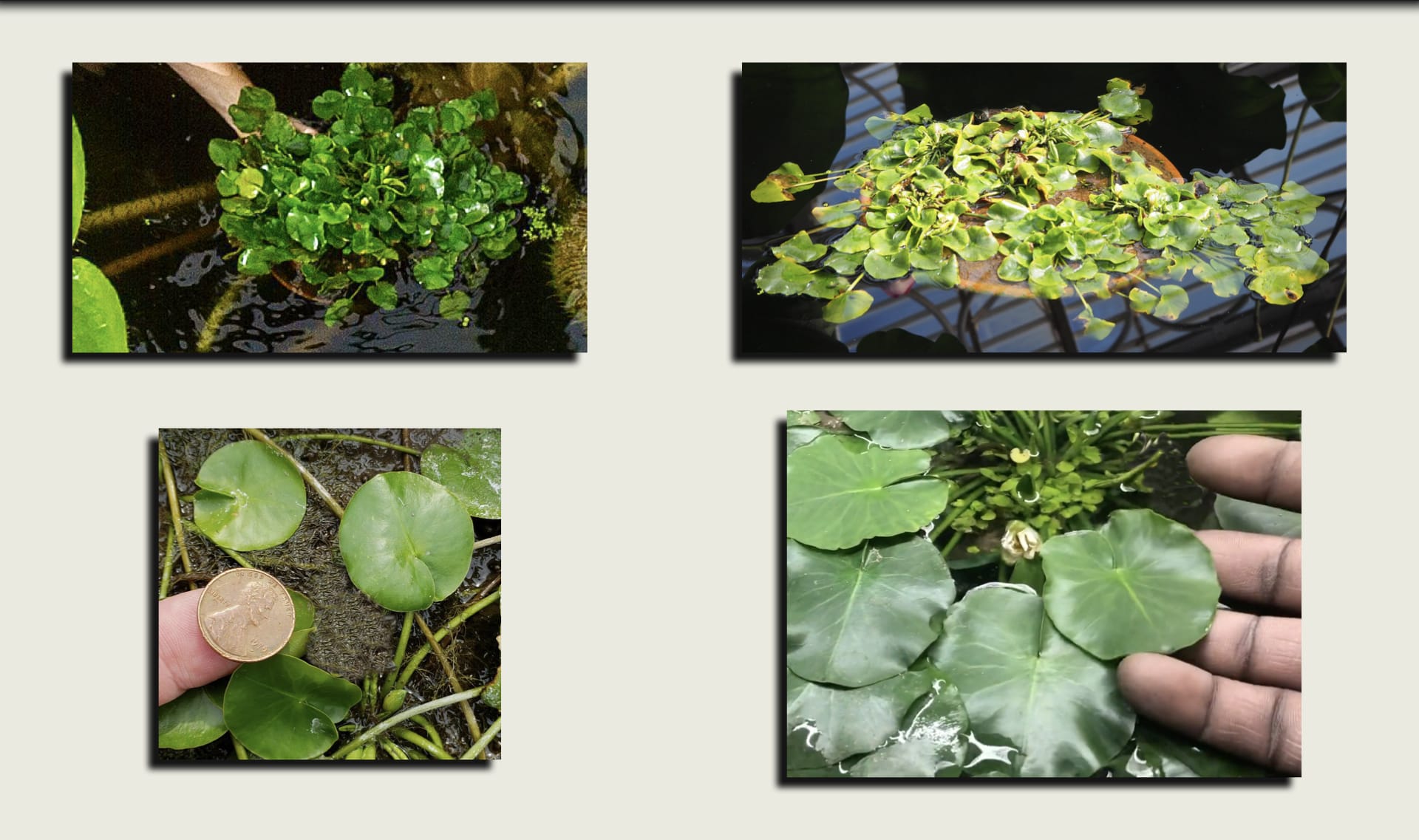
Step
06/08
06/08
Now it’s your turn to create a new tiny water lily leaf. Get a
worksheet, and write your name at the top. Remember: your leaf
should be similar to, but not exactly like, one of these leaves.

Step
07/08
07/08
When you are done, discuss. How did you know what to make your
tiny water lily leaf look like?
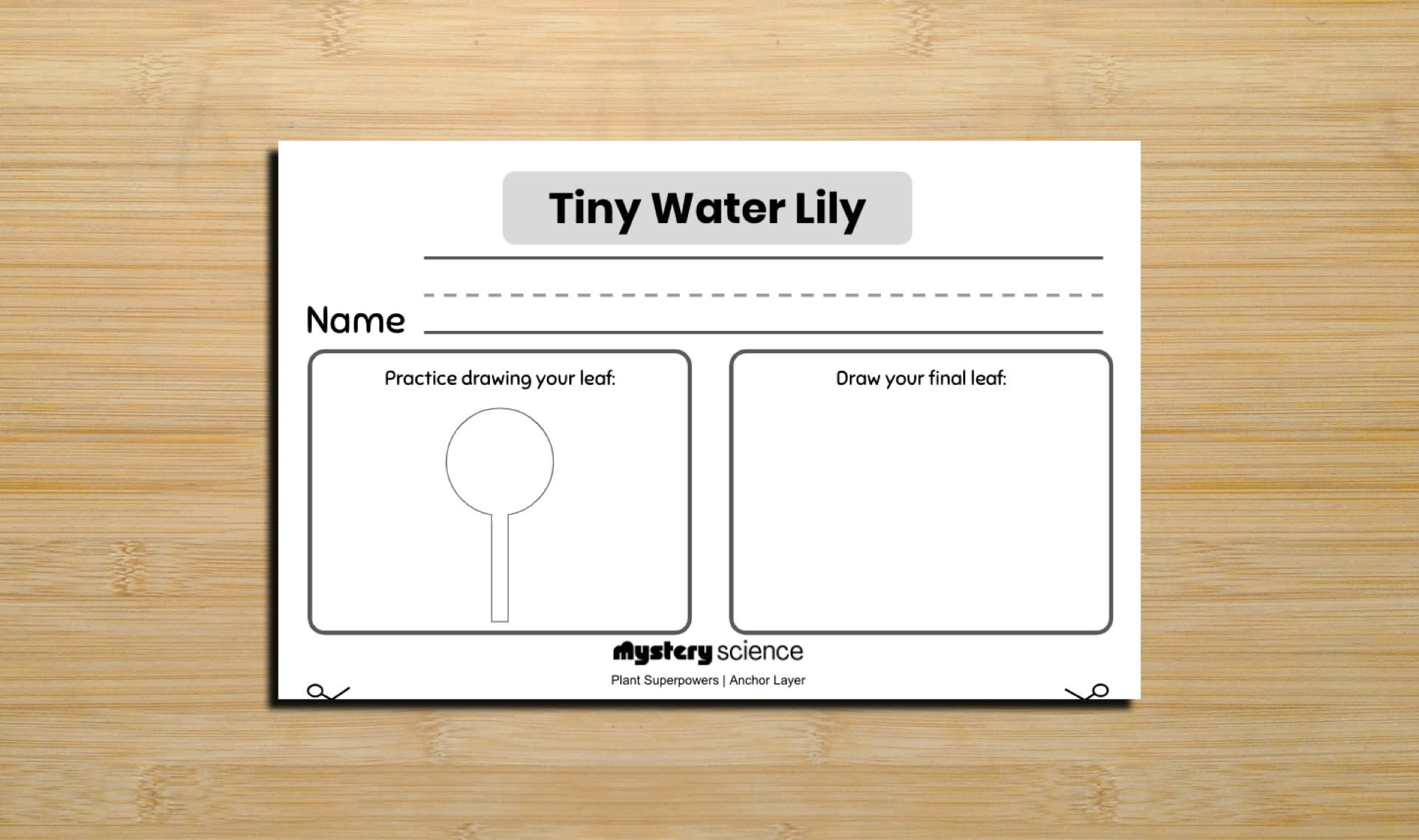
Step
08/08
08/08
Now, you can compare your leaf with others. Or, you can cut out all
of the leaves in your class and put them together into a tiny water lily
plant on a bulletin board. Then your class will have its own tiny water
lily plant!
